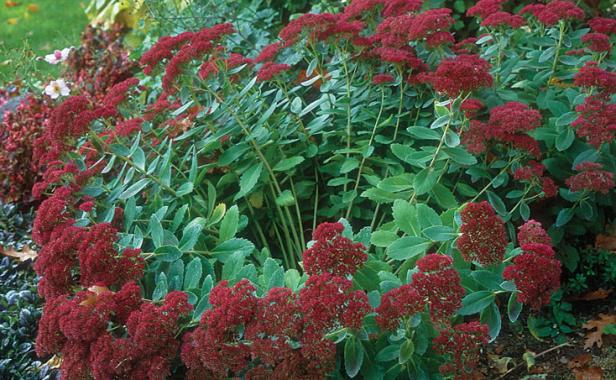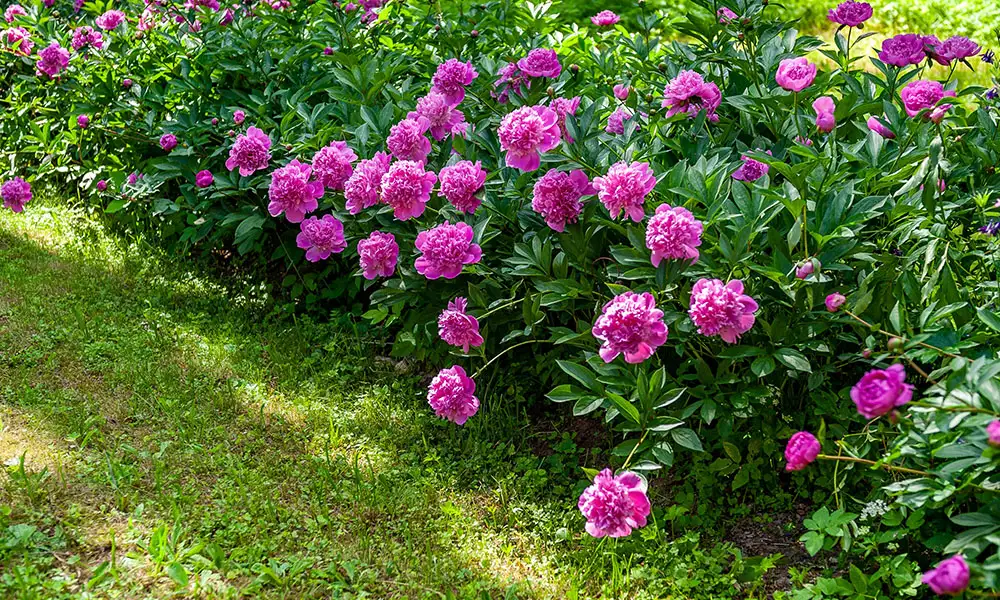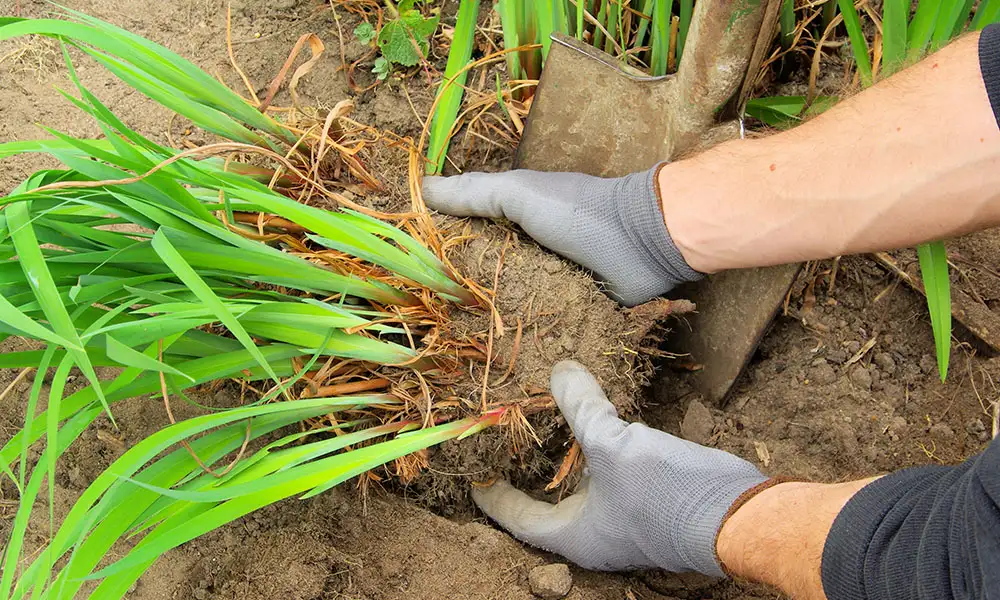Perennials are the backbone of many gardens and outdoor spaces, bringing vibrant color and texture year after year. (Isn’t that what we love about perennials?) But as they mature, these plants can become crowded, less vigorous, or outgrow their space.
Dividing perennials is one of the best ways to keep them healthy, encourage more blooms, and even expand your garden without spending extra money!
It’s also a great way to share plants with your friends… And make new friends!
Understanding when and how to divide perennials is essential to keeping your garden thriving. So keep reading and open yourself up to the art of dividing perennials, and gather some valuable tips on how to get the most from your plants.
Why Should You Divide Perennials?
Dividing perennials isn’t just about creating more plants—although that’s a great perk! Here are a few key reasons why it’s beneficial:
Revitalizes growth: As perennials grow, they can become overcrowded, leading to fewer flowers and stunted growth. Dividing them gives each section more space to access water and nutrients.
Prevents overcrowding: Without regular division, some perennials can spread beyond their designated space, overtaking other plants or becoming too dense.
Improves plant health: Division reduces the risk of disease by increasing airflow around the plants and ensuring roots aren’t competing for resources.
Expands your garden: Dividing perennials lets you create new plants to fill bare spots in your space or share with friends.

When to Divide Perennials in Zone 6
The timing for dividing perennials depends on the type of plant and the growing conditions. Here’s a general rule for our area, zone 6:
Spring-blooming Perennials: Divide in the Fall
Perennials such as irises, peonies, and bleeding hearts bloom in the spring and should be divided in late summer or early fall (usually September or early October). This allows them to establish new roots before the cool temps of winter really set in.
Summer- and Fall-blooming Perennials: Divide in the Spring
Perennials that bloom in the summer and fall, such as daylilies, hostas, and coneflowers, are best divided in early spring (late March through early May), just as new growth begins. This way, the plants have plenty of time to settle in before blooming.
In zone 6, you want to avoid dividing plants during the hottest days of peak summertime or when the ground is frozen in winter. Both can stress your plants, making it harder for them to recover.
How to Divide Perennials: A Step-by-Step Guide
Now that you know when to divide your perennials, let’s talk about how to do it right. No worries, though, it’s actually pretty straightforward.
What You’ll Need:
- A sharp spade or garden fork
- A clean, sharp knife or pruning shears (for tougher roots)
- Compost or soil amendments
- Garden hose or watering can
- Mulch (optional)
Step 1: Water Your Plants
- The day before you plan to divide your perennials, give them a thorough watering.
- This helps loosen the soil around the roots, making them easier to dig up and less likely to be damaged during the process.
Step 2: Dig Up the Plant
- Using a sharp spade or garden fork, dig around the base of the plant, starting about four to six inches away from the center.
- Work your way around in a circle, gently lifting the plant and its root ball out of the ground. Be careful not to damage the roots!
- If the plant is large, you can split it while it’s still in the ground by slicing through the center with the point or edge of a sharp spade and lifting out smaller sections.
Step 3: Divide the Root Ball
- Once the plant is out of the ground, shake off any excess soil to expose the roots. You’ll notice that the root ball has several “clumps” or sections. These are the natural divisions of the plant.
- Use your hands or a sharp knife to separate the clumps. For plants with tougher roots, such as ornamental grasses, you may need to cut through them with pruning shears. Aim to have at least three ot five healthy shoots and plenty of roots in each new division.
Step 4: Replant the Divisions
- Before replanting, amend the soil with compost or other organic matter to give the new divisions a nutrient-rich environment.
- Dig a hole slightly larger than the root ball and plant each division at the same depth it was growing before. Be sure to space the divisions according to the plant’s mature size to give them room to grow.
- Water the newly planted divisions thoroughly to help them settle in and reduce transplant shock.
Step 5: Mulch and Care
- After planting, you can add a layer of mulch around the base of your new divisions to help retain moisture and regulate soil temperature.
- Over the next few weeks, keep the plants well-watered until they’re fully established, especially if you’re dividing them in the fall before the ground freezes.

Which Perennials Are Best for Dividing?
Not all perennials need to be divided regularly, but some benefit more than others. Take a look at this list of common zone 6 perennials that often need division every three to five years:
- Hostas: These shade-loving beauties multiply quickly and can be divided in the spring or fall.
- Daylilies: Good candidates! These vigorous growers thrive after being divided in early spring or late summer.
- Irises: Bearded irises in particular need division every three to four years, preferably in late summer after they finish blooming.
- Coneflowers: Divide these every few years in early spring for healthier blooms and sturdier plants.
- Sedum (Autumn Joy): Divide every three to four years in early spring to prevent overcrowding.
- Peonies: Though they don’t require frequent division, older peonies benefit from being divided in early fall to rejuvenate their bloom production.
Signs It’s Time to Divide Your Perennials
Still not sure if your plants need dividing? Here are a few signs that your perennials could benefit from a little more space:
- The center of the plant looks dead or sparse while the edges are thriving.
- The plant is producing fewer flowers than in previous years.
- It has outgrown its designated space or is crowding neighboring plants.
- The plant looks weak or leggy.
Keep Your Perennials Healthy AND Get More Plants
Dividing perennials is an important activity that can give your garden new life and energy. And fall and spring in our area are the ideal times to tackle this task. By following these steps, you’ll help your plants stay healthy, prevent overcrowding, and create even more beauty in your garden. Plus, there’s something incredibly satisfying about turning one healthy perennial into several more!
As always, if you have any questions or need some advice, your friends at Burnett’s Country Gardens are here for you.
